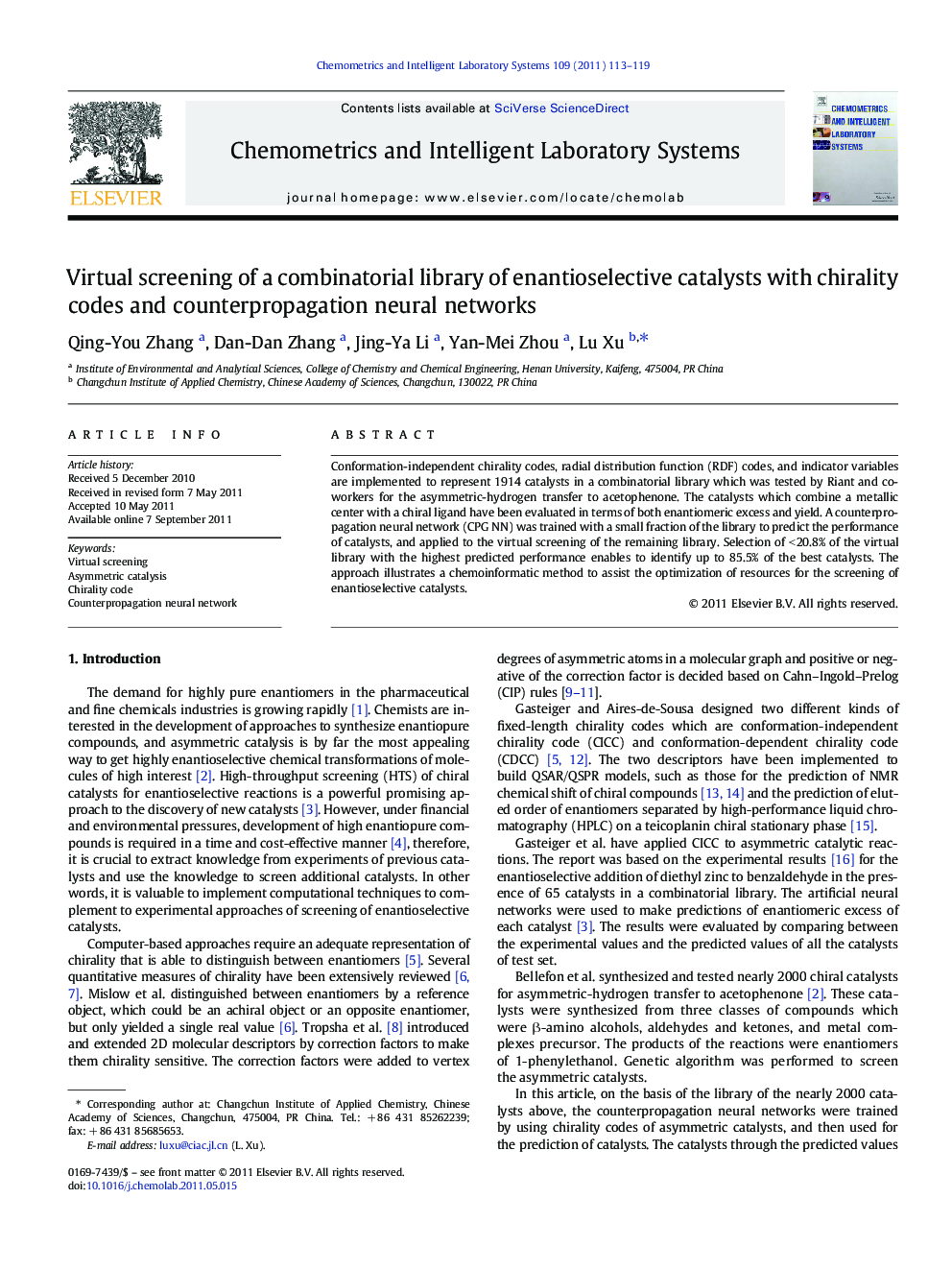| Article ID | Journal | Published Year | Pages | File Type |
|---|---|---|---|---|
| 1179795 | Chemometrics and Intelligent Laboratory Systems | 2011 | 7 Pages |
Abstract
Conformation-independent chirality codes, radial distribution function (RDF) codes, and indicator variables are implemented to represent 1914 catalysts in a combinatorial library which was tested by Riant and co-workers for the asymmetric-hydrogen transfer to acetophenone. The catalysts which combine a metallic center with a chiral ligand have been evaluated in terms of both enantiomeric excess and yield. A counterpropagation neural network (CPG NN) was trained with a small fraction of the library to predict the performance of catalysts, and applied to the virtual screening of the remaining library. Selection of <Â 20.8% of the virtual library with the highest predicted performance enables to identify up to 85.5% of the best catalysts. The approach illustrates a chemoinformatic method to assist the optimization of resources for the screening of enantioselective catalysts.
Related Topics
Physical Sciences and Engineering
Chemistry
Analytical Chemistry
Authors
Qing-You Zhang, Dan-Dan Zhang, Jing-Ya Li, Yan-Mei Zhou, Lu Xu,
